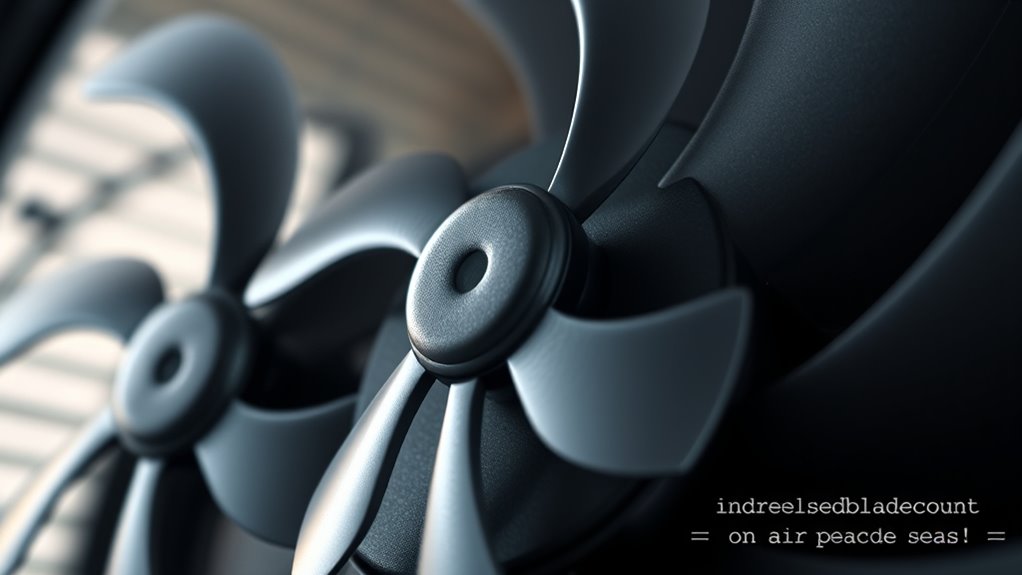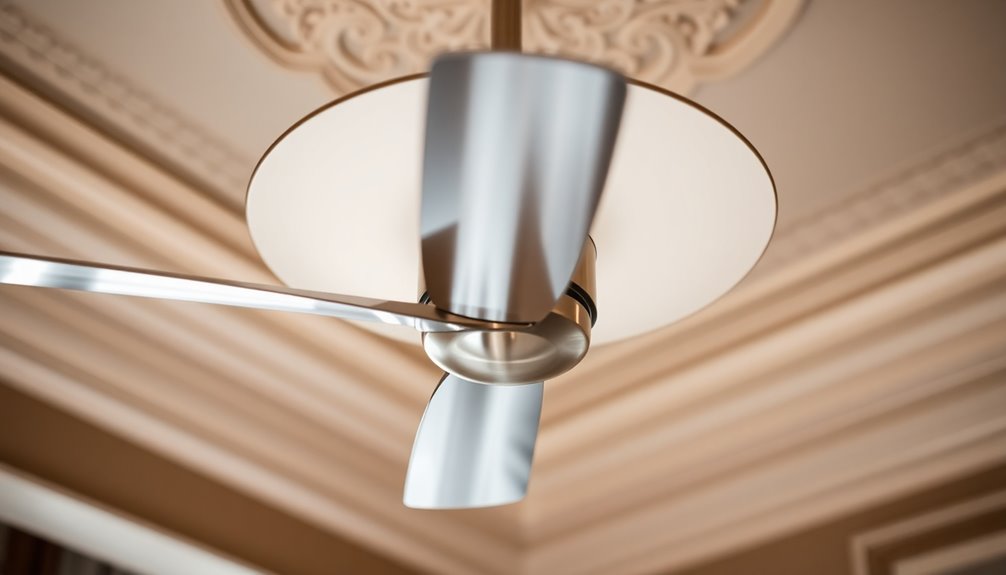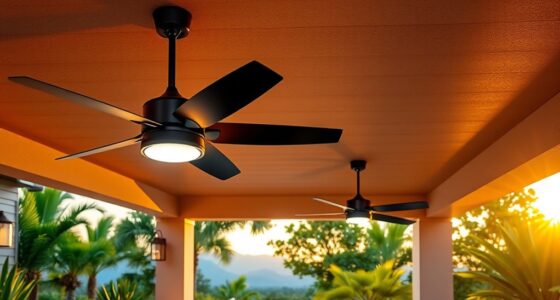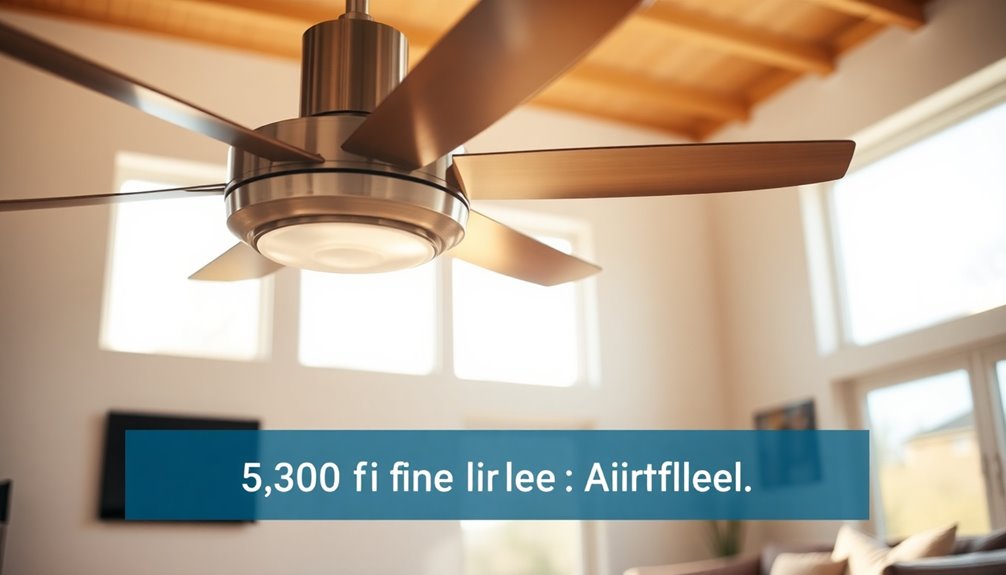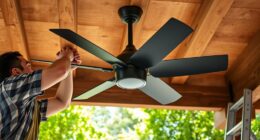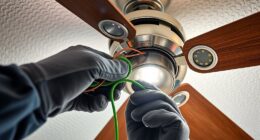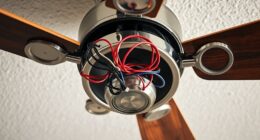Increasing the blade count in fans and turbines often raises noise levels because it creates more complex airflow interactions and turbulence, leading to higher sound emissions. On the other hand, reducing the number of blades can lower noise but may impact performance and efficiency. Blade shape, material, and alignment also play vital roles in noise production. To discover ways to optimize blade design for quieter operation, explore further tips and strategies that balance performance with sound reduction.
Key Takeaways
- Increasing blade count can reduce overall noise but may introduce complex acoustic emissions.
- More blades often increase turbulence, leading to higher aerodynamic noise levels.
- Properly optimized blade shapes and materials can mitigate noise despite higher blade counts.
- Excessive blades can cause airflow interference, raising vibration and sound emissions.
- Balancing blade number with design and material choices helps achieve quieter operation.
The Relationship Between Blade Number and Acoustic Emissions
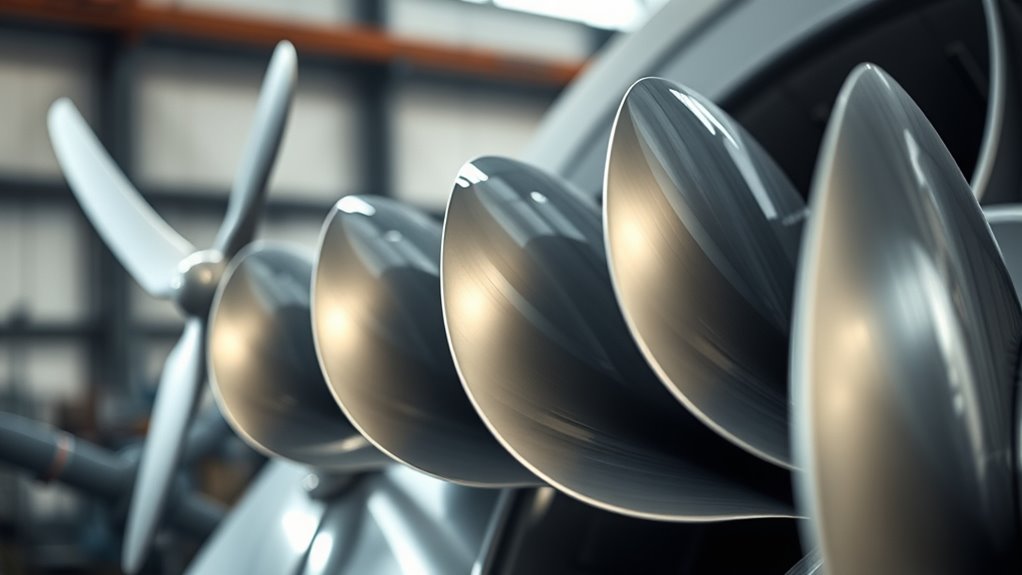
While increasing the number of blades on a rotor can sometimes reduce overall noise, it often leads to more complex acoustic emissions. The blade material plays a vital role here—lighter, more flexible materials may generate less noise, but they can also produce different sound signatures as the blades interact with airflow. Blade shape matters too; wider or more curved blades tend to create more turbulence, increasing noise levels. As you add more blades, the shape and material influence how sound waves propagate and interfere with each other. You might notice that certain combinations lead to smoother operation and quieter performance, while others amplify vibrations and noise. Blade material selection influences how sound waves are emitted and absorbed, helping you optimize rotor design for quieter operation. Additionally, understanding acoustic interference patterns can assist in designing blades that minimize undesirable noise emissions.
How Blade Count Affects Aerodynamic Noise Generation
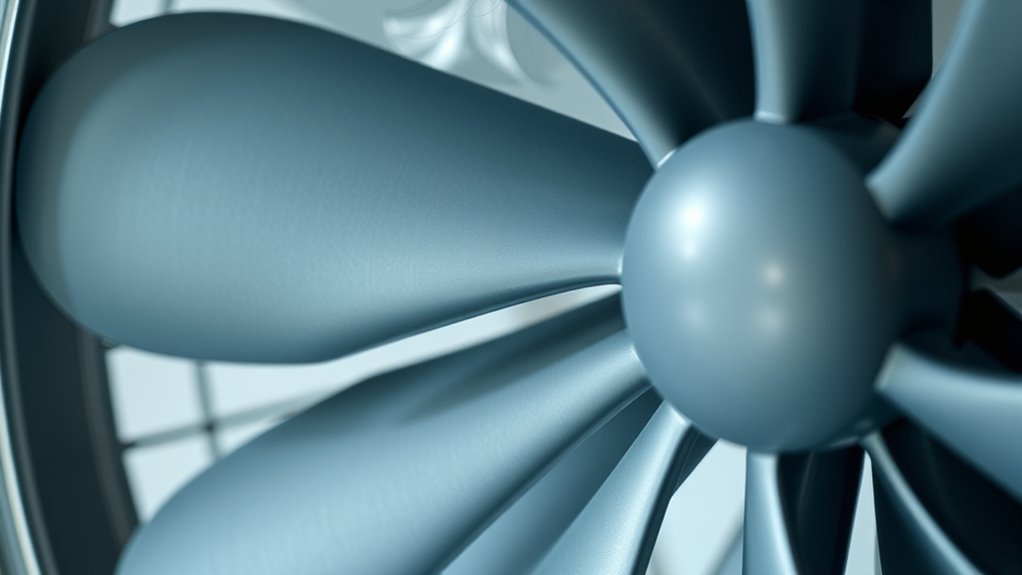
Increasing the number of blades on a rotor can markedly influence the amount of aerodynamic noise it produces. As blade count rises, the interactions between blades become more complex, often increasing turbulence and sound emissions. Blade shape plays a vital role; streamlined, aerodynamically optimized shapes reduce drag and noise by smoothening airflow. Material selection also impacts noise levels—rigid, lightweight materials can dampen vibrations and minimize blade flutter, lowering noise. Thinner, more precisely crafted blades generate less airflow disturbance, decreasing aerodynamic noise. Proper blade alignment and regular inspection of components can help reduce vibrations that contribute to noise. Additionally, incorporating noise-reducing materials into blade construction can further diminish sound output. By carefully choosing blade shape and materials, you can manage how blade count affects aerodynamic noise, achieving a balance between performance and acoustic comfort.
The Impact of Blade Configuration on Vibration and Sound
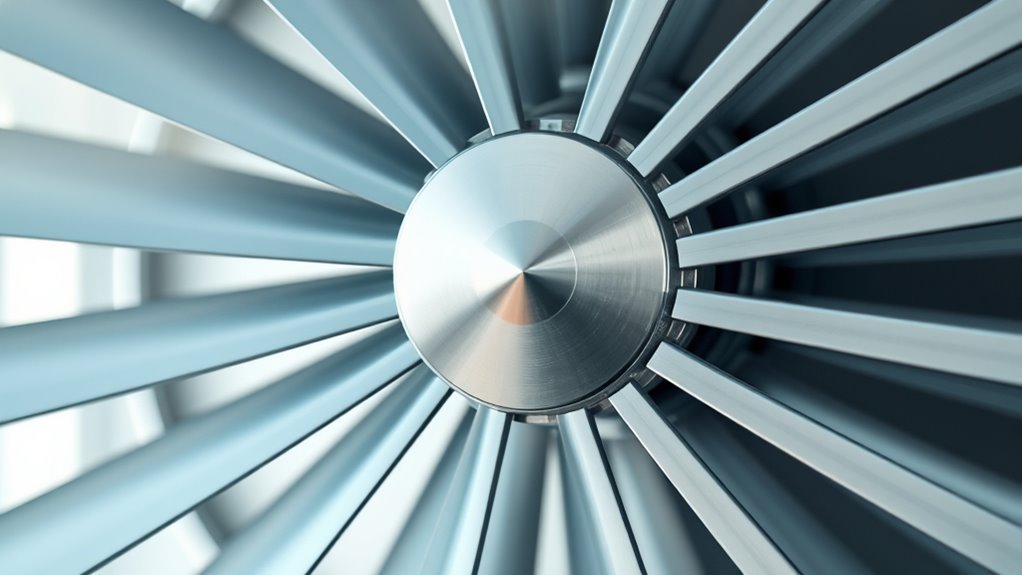
The way blades are arranged on a rotor considerably influences both vibration levels and sound emission. Different blade configurations, such as blade shape and pitch, can create uneven airflow, leading to increased vibrations and noise. The choice of blade material plays a pivotal role; lightweight, durable materials reduce vibration transmission and help minimize sound. Proper maintenance practices, like inspecting blades regularly and ensuring their integrity, prevent cracks or damage that could amplify vibrations and noise. When blades are well-maintained and correctly configured, they operate more smoothly, reducing unwanted vibrations and resulting in quieter operation. Conversely, neglecting maintenance or using incompatible blade materials can cause imbalance, higher vibration levels, and increased noise pollution. Your focus on blade configuration, material, and upkeep directly impacts sound and vibration control. Additionally, selecting appropriate materials based on their damping properties can further mitigate noise levels. Understanding vibration reduction techniques can also support quieter blade operation and prolong system lifespan, with blade balance being a critical factor in minimizing vibrations.
Balancing Blade Count for Optimal Performance and Noise Reduction
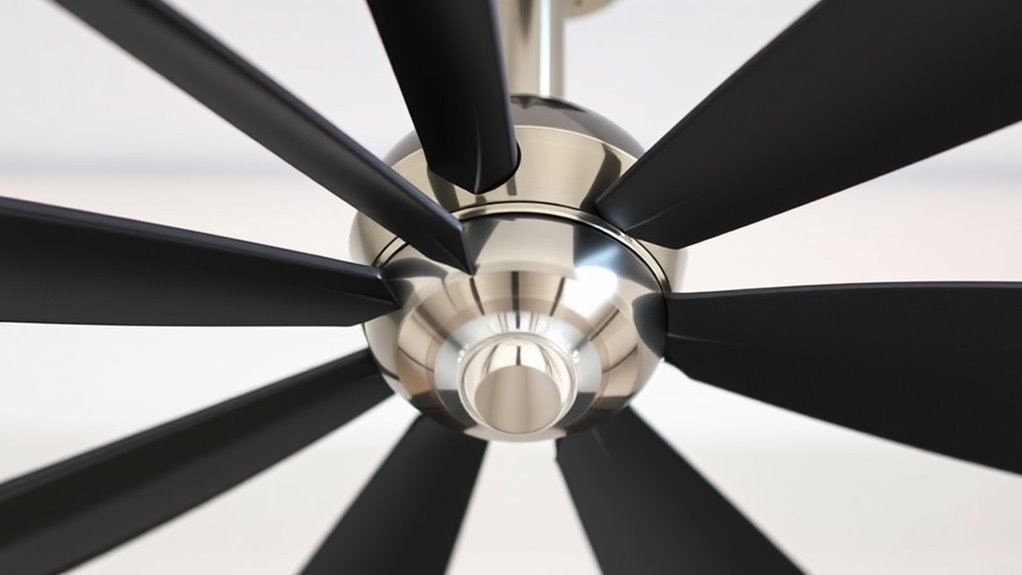
Achieving the right blade count is essential for balancing performance and noise reduction. Too many blades can increase aerodynamic drag and generate more noise, while too few may reduce efficiency. Selecting the best blade count depends on factors like blade material and manufacturing precision. High-quality blade materials, such as lightweight alloys or composites, allow for better performance at lower blade counts, reducing noise without sacrificing strength. Manufacturing precision ensures that blades are uniform and accurately shaped, minimizing turbulence and vibrations that contribute to noise. Additionally, understanding best beaches can inspire designs that optimize airflow and reduce sound in engineering applications. Proper blade design also involves considering color accuracy, which impacts overall performance and visual quality in projectors. By fine-tuning blade count with these considerations, you can maximize airflow, improve efficiency, and keep noise levels in check. Striking this balance requires careful material selection and precise manufacturing to meet your performance goals without creating unnecessary sound. Incorporating aerospace-grade materials can further enhance blade durability and noise performance in demanding environments.
Design Strategies for Quieter Fans and Turbines Through Blade Optimization

Optimizing blade design is a key strategy for reducing noise in fans and turbines. Selecting the right blade material can dampen vibrations and lessen sound emissions, making operation quieter. Durable materials like composites or coated metals help absorb noise and withstand wear. Manufacturing precision also plays a vital role; tight tolerances ensure blades have smooth surfaces and accurate shapes, which reduce turbulence and aerodynamic noise. By fine-tuning blade geometry—such as blade angle and surface finish—you can minimize airflow disturbances that generate noise. Combining high-quality materials with precise manufacturing creates blades that operate smoothly and quietly. Implementing these design strategies not only decreases noise levels but also improves overall efficiency and lifespan of fans and turbines.
Frequently Asked Questions
How Does Blade Material Influence Noise Levels Regardless of Count?
Blade material considerably affects noise levels, regardless of blade count. If you choose durable materials like composites or metals, you’ll notice less vibration and sound. These materials also enhance blade durability, reducing maintenance needs. However, they might increase manufacturing costs. Opting for high-quality materials can provide quieter operation while balancing durability and expense, helping you achieve a more efficient and quieter system overall.
Can Blade Shape Modifications Reduce Noise Without Changing Blade Count?
Yes, modifying blade shape can effectively reduce noise without changing blade count. By optimizing blade shape—such as adding curvature or adjusting angles—you can improve airflow and minimize turbulence, leading to quieter operation. These shape modifications help streamline airflow, decrease vibrations, and lower noise levels, making your equipment more efficient and quieter, all while keeping the same number of blades.
What Role Does Operational Speed Play in Blade Count-Related Noise?
Imagine a symphony where each instrument’s tempo affects the harmony. Your operational speed acts as the conductor, amplifying blade resonance and fan harmonics. As speed increases, blades vibrate more, intensifying noise. Lower speeds reduce these effects, creating a calmer soundscape. You control this rhythm, balancing efficiency and noise, ensuring the blades’ melody remains smooth without discordant fan harmonics or resonance, making operation quieter and more harmonious.
Are There Industry Standards for Acceptable Noise Levels Based on Blade Count?
You might wonder if industry standards specify acceptable noise levels based on blade count. While specific limits vary, maintaining proper blade maintenance is vital for noise mitigation. Regular inspections and balancing reduce noise, regardless of blade count. Industry guidelines often recommend adhering to local regulations and manufacturer recommendations, emphasizing noise control through effective blade maintenance and proper design. Staying compliant helps guarantee quieter operation and minimizes environmental impact.
How Does Environmental Airflow Affect Noise From Different Blade Configurations?
Environmental airflow substantially impacts noise from various blade configurations by increasing airflow turbulence, which amplifies noise levels. When airflow is turbulent, you’ll notice more noise, especially with certain blade designs. To minimize this, focus on noise mitigation strategies like optimizing blade angles or using aerodynamic shapes. Managing airflow effectively reduces turbulence, helping you control noise regardless of blade count, ensuring a quieter, more efficient operation in different environmental conditions.
Conclusion
Think of your fan or turbine as a symphony orchestra—each blade plays a crucial role in creating harmonious performance. Increasing blade count can quiet the noise, like softening a loud drumbeat, but too many may cause a chaotic cacophony. By balancing blade number and configuration, you tune your device for both efficiency and serenity. When you optimize blade design, you’re conducting a quieter, smoother melody that benefits both performance and peace of mind.
